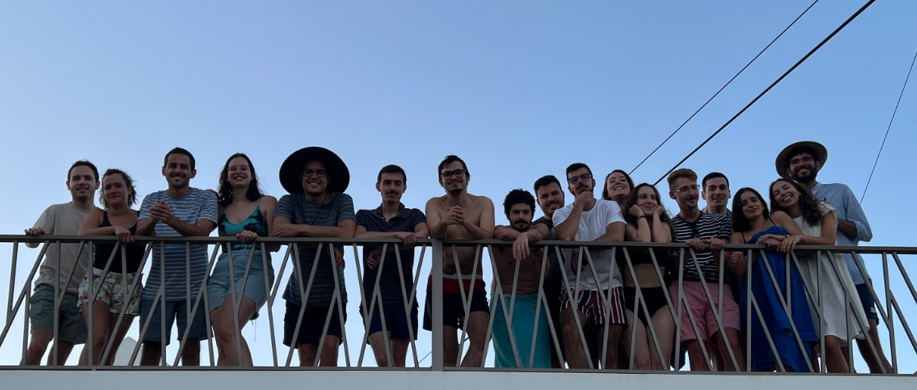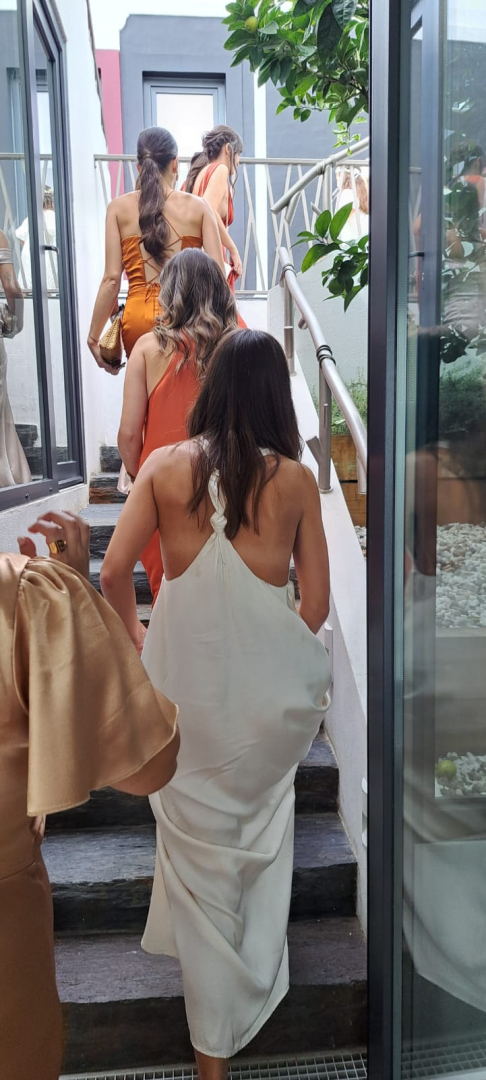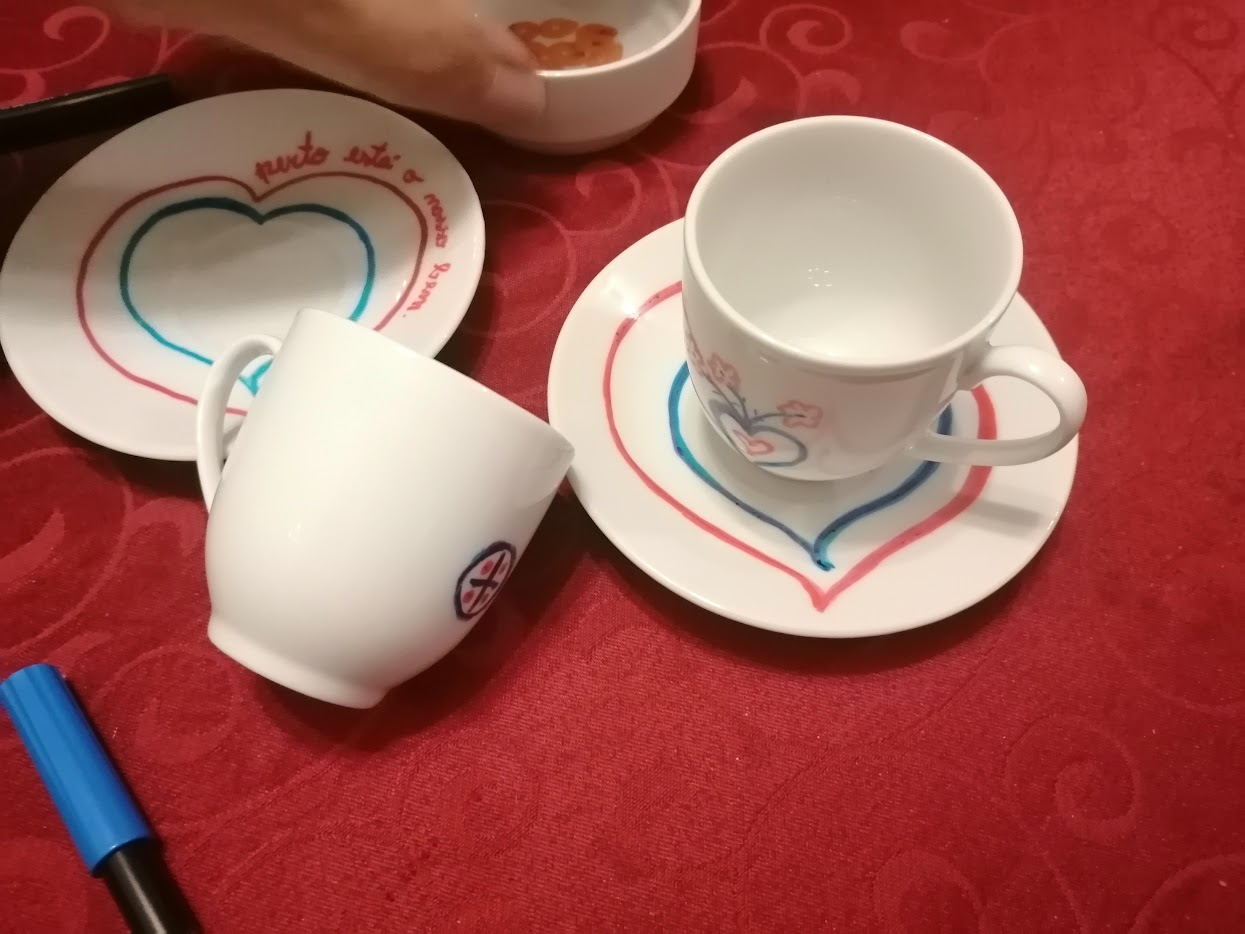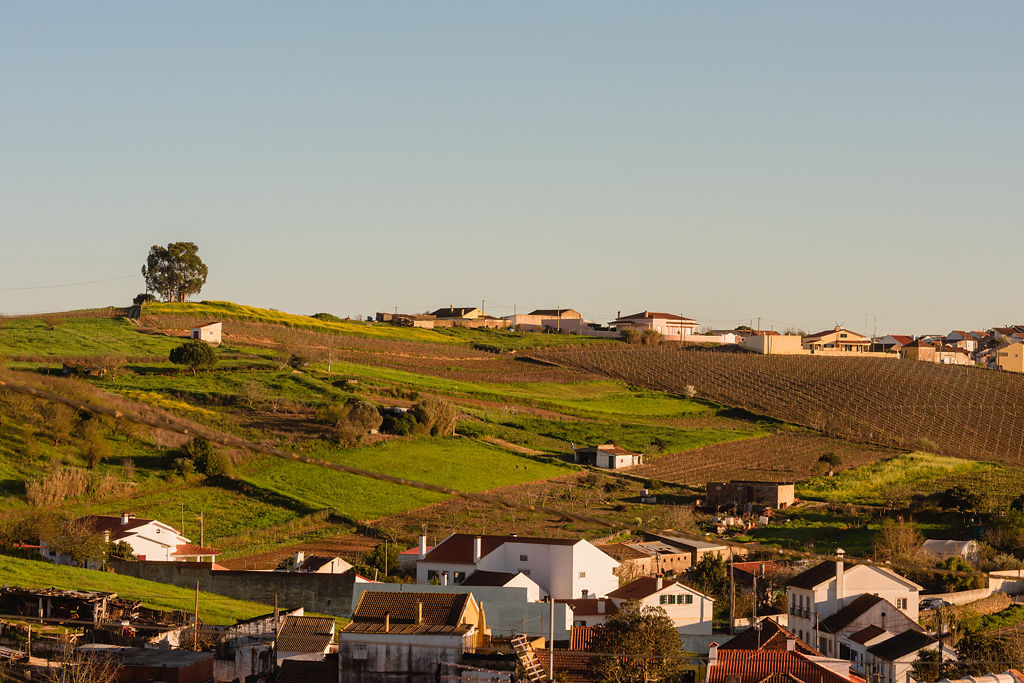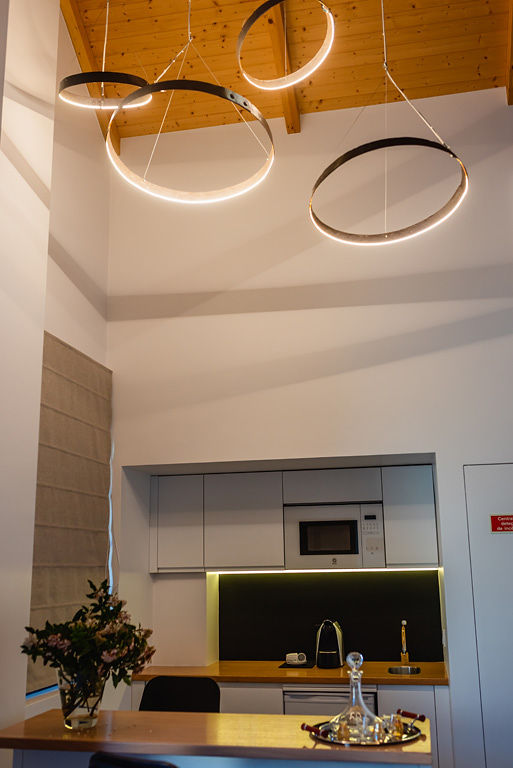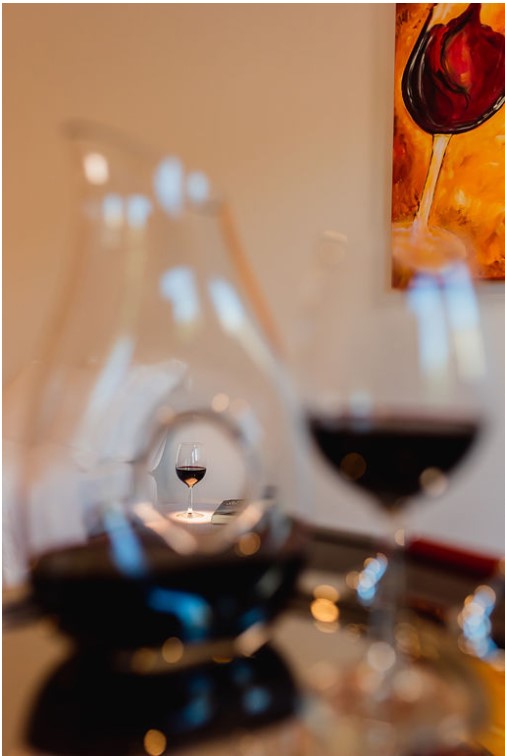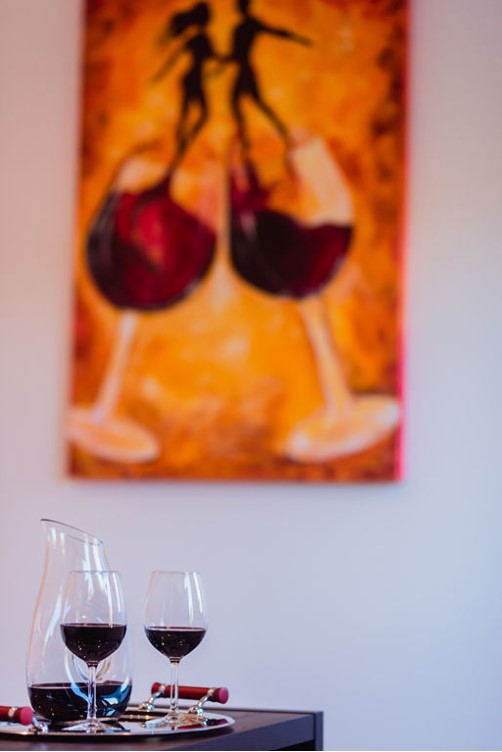Gamboa's Place
Basic information
Project Title
Gamboa's Place
Full project title
Gamboa’s Place an old winery renovated to a village guest house in Portugal countryside.
Category
Regaining a sense of belonging
Project Description
Almost a century ago, there was a winery in a small village with open doors for visitors and friends where joy sparkled. With time, the winery grew old and lost its spirit. The Gamboa’s Place project redesigned this family winery as a guest house, valuing local heritage and recovering the sense of belonging in the neighbourhood. Mixing wine and creativity with art, the winery now welcomes families and friends who come for special events like weddings and birthdays, regaining its meeting spirit.
Geographical Scope
Local
Project Region
Olhalvo, Alenquer municipality, Portugal
Urban or rural issues
Mainly rural
Physical or other transformations
It refers to a physical transformation of the built environment (hard investment)
EU Programme or fund
Yes
Which funds
Other
Other Funds
ERDF : European Regional Development Fund and <br />
ESF : European Social Fund
Description of the project
Summary
Gamboa’s Place project aims at the sustainability of an old winery, but also at the sustainability of a small village in the rural centre of Portugal valorising local heritage and contributing to increase the sense of belonging of the neighbours, their families, and friends.
The winery has been around for almost a century and was a meeting place within the village, an open door where the young and the old come together telling their stories and enjoying wine. But time went by, technology evolved, and this winery got old.
Gamboa’s Place project redesigned the family winery to become a village guest house, maintaining most of the building’s characteristics and valuing local heritage.
Main target groups of the project are the family itself, the neighbours, their families and friends. The family and the neighbours saw the old winery being transformed into a beautiful guest house . When visiting the renovated building they recognised most of the elements that were reused or gained other purposes and they shared stories with the young ones about their youth. As a guest house, the winery welcomes family and friends that come to visit the local families at special times, like birthdays or weddings. In those events stories are shared about the local traditions, the grape varieties, the inspiration for the paintings that were produced especially for each wall, combining wine and creativity.
With the Gamboa´s Place project the winery regains his meeting spirit, promoting dialogues between the heritage and the new aesthetics of the building and between the neighbourhood and the visitors increasing the sense of belonging.
Main outcomes can be confirmed by the way the people in the small village talk about the old winery and by the guests that have already visited Gamboa’s place and the way they comment on their experience.
The winery has been around for almost a century and was a meeting place within the village, an open door where the young and the old come together telling their stories and enjoying wine. But time went by, technology evolved, and this winery got old.
Gamboa’s Place project redesigned the family winery to become a village guest house, maintaining most of the building’s characteristics and valuing local heritage.
Main target groups of the project are the family itself, the neighbours, their families and friends. The family and the neighbours saw the old winery being transformed into a beautiful guest house . When visiting the renovated building they recognised most of the elements that were reused or gained other purposes and they shared stories with the young ones about their youth. As a guest house, the winery welcomes family and friends that come to visit the local families at special times, like birthdays or weddings. In those events stories are shared about the local traditions, the grape varieties, the inspiration for the paintings that were produced especially for each wall, combining wine and creativity.
With the Gamboa´s Place project the winery regains his meeting spirit, promoting dialogues between the heritage and the new aesthetics of the building and between the neighbourhood and the visitors increasing the sense of belonging.
Main outcomes can be confirmed by the way the people in the small village talk about the old winery and by the guests that have already visited Gamboa’s place and the way they comment on their experience.
Key objectives for sustainability
Our small villages in the rural areas are becoming less populated, with difficulties to attract young families, difficulties to maintain local traditions and social engagement, with more degraded buildings and less resources to reconstruct them. They are becoming less and less sustainable.
The Gamboa’s Place reconstruction example serves as an inspiration to future reconstructions and shows that it is possible to make a sustainable project from an old degraded winery.
Gamboa’s Place guest house also brings together many local partnerships, creating value and contributing to the local commerce circularity, helping the partners and their families to become more economically sustainable.
In the kitchen, the organic leftovers are collected to be reused as chicken food in a local partnership and there is also garbage selection and separation for recycling.
Even in the immaterial domain, when the neighbours recognise the value that was given to the heritage elements and to the local traditions, they also feel more aware of their value and can become more socially engaged contributing also to immaterial sustainability.
Relating to climate goals, in the renovation of the building solar panels for hot water were installed, high quality double glass windows were used, ceiling insulation was installed and also air conditioning in all the rooms and in the event room, allowing for a reduced energy need.
As a contribution to the biodiversity a garden was installed next to the event room and also a small interior garden with a lime tree and some lavanda plants to give natural perfume to the place.
The Gamboa’s Place reconstruction example serves as an inspiration to future reconstructions and shows that it is possible to make a sustainable project from an old degraded winery.
Gamboa’s Place guest house also brings together many local partnerships, creating value and contributing to the local commerce circularity, helping the partners and their families to become more economically sustainable.
In the kitchen, the organic leftovers are collected to be reused as chicken food in a local partnership and there is also garbage selection and separation for recycling.
Even in the immaterial domain, when the neighbours recognise the value that was given to the heritage elements and to the local traditions, they also feel more aware of their value and can become more socially engaged contributing also to immaterial sustainability.
Relating to climate goals, in the renovation of the building solar panels for hot water were installed, high quality double glass windows were used, ceiling insulation was installed and also air conditioning in all the rooms and in the event room, allowing for a reduced energy need.
As a contribution to the biodiversity a garden was installed next to the event room and also a small interior garden with a lime tree and some lavanda plants to give natural perfume to the place.
Key objectives for aesthetics and quality
The Gamboa’s Place redesign and reconstruction example serves as an inspiration for future projects combining the heritage elements with a clean and aesthetical style. Many elements related to the winery were preserved, some of them got new functions, as bedside tables or as acoustics control elements in the event room.
Each bedroom of the guest house is named after wine grape varieties that continue to be cultivated by the family. The interior design of each bedroom is inspired by the grape variety that influences the colours and even the painting that was created specially for each room. Other paintings inspired in the wine were created for selected walls, each one with its story that can be told to the visitors, contributing to a better understanding of the space aesthetics.
At breakfast time the visitors can also appreciate the style of the dishes and the coffee cups, that are hand painted with elements from a local tradition named “Cantar e pintar os reis” i n Portuguese, that can be translated to “Singing and painting the kings” and are related to the story of the tree wise men that visited the baby Jesus.
The heritage elements are creatively combined with modern furniture allowing a clean and light aesthetics to be experienced by the visitors.
Each bedroom of the guest house is named after wine grape varieties that continue to be cultivated by the family. The interior design of each bedroom is inspired by the grape variety that influences the colours and even the painting that was created specially for each room. Other paintings inspired in the wine were created for selected walls, each one with its story that can be told to the visitors, contributing to a better understanding of the space aesthetics.
At breakfast time the visitors can also appreciate the style of the dishes and the coffee cups, that are hand painted with elements from a local tradition named “Cantar e pintar os reis” i n Portuguese, that can be translated to “Singing and painting the kings” and are related to the story of the tree wise men that visited the baby Jesus.
The heritage elements are creatively combined with modern furniture allowing a clean and light aesthetics to be experienced by the visitors.
Key objectives for inclusion
The renovation of the old winery is a good example for the most needed dialogue between the generations, in this case the knowledge and the stories are easily shared. The seniors know how the old winery functioned, where the grapes were fermented, how they were transported within the building and how it evolved over time. There are people that can recall how the work was done in the winery, mainly in the harvest period, and share with their grandsons the old stories.
Some of the visitors came from an urban culture and like to learn about the small village way of living, in the rural area, where it is easy to grab an apple from the tree or listen to the morning rooster and to the church bell, in a quiet environment. This experiences bring questions from the visitors and stories from the locals, contributing for a dialogue across the urban and the rural culture, enlarging the visitors' awareness about the rural heritage.
Gamboa’s place project also brought to the small village visitors from abroad, more than 14 nationalities by now, with different habits and speaking different languages. From their interaction with the locals, in the morning walks or in the visits to the market or to the pharmacy the dialogue is established building bridges across countries and cultures.
Some of the visitors came from an urban culture and like to learn about the small village way of living, in the rural area, where it is easy to grab an apple from the tree or listen to the morning rooster and to the church bell, in a quiet environment. This experiences bring questions from the visitors and stories from the locals, contributing for a dialogue across the urban and the rural culture, enlarging the visitors' awareness about the rural heritage.
Gamboa’s place project also brought to the small village visitors from abroad, more than 14 nationalities by now, with different habits and speaking different languages. From their interaction with the locals, in the morning walks or in the visits to the market or to the pharmacy the dialogue is established building bridges across countries and cultures.
Results in relation to category
Gamboa’s Place guest house has been working for two and a half years, and has already welcomed more that 1200 visitors from more than 14 different countries. All the visitor’s comments are positive, enhancing the aesthetics of the project, the creativity of the decoration and the valorization of the heritage elements and the stories that involve them. For the neighbourhood, there is a sense of pride in having this old winery rebuilt as a village guest house that you can show to your friends and foreign family, and where they can also be welcome as guests. The main impact is inspirational and probably will be seen later in the future, but it is notable that after the visit many youngsters start to see their families' old wineries and buildings in a different perspective.
How Citizens benefit
In the process of redesigning the old winery two local young architects were involved and also a local company specialised in the civil construction activities, this expertise in combination with the ideas of the project promoters lead to a good project that was presented to the municipality and approved. In the interior design there was the need to involve some dedicated partners and family members to sew and create some laces for the windows. In the paintings creation a local artist was especially involved in a fruitful co-creation for each special wall. To treat the acoustics of the event room some special wood elements were created, using parts of the old barrels that were once used in the winery involving one other artist. To write the name of the project in stone outside of the building one other team of artists were involved, our local master pavers that shared their expertise. The guards of the terrace and the stairs were also made by a team of artists, part of the guards are like a iron sculpture inspired by the vines in the winter when they are pruned.
Neighbours and old winery workers also provided content to the several stories that are shared with the visitors, contributing to the immaterial part of the project.
A great part of the village people contributed in one way or the other to the project implementation with different levels of involvement and cooperation. This involvement also enlarges the sense of belonging of the small village.
Neighbours and old winery workers also provided content to the several stories that are shared with the visitors, contributing to the immaterial part of the project.
A great part of the village people contributed in one way or the other to the project implementation with different levels of involvement and cooperation. This involvement also enlarges the sense of belonging of the small village.
Physical or other transformations
It refers to a physical transformation of the built environment (hard investment)
Innovative character
Mainstream practices in the field of the project sometimes tend to rebuild the place as close to the original as possible, in a museum like perspective, with many tools exposed and an environment that resembles the times when the winery was working. In other projects the heritage elements are simply forgotten, and the building is torn down to build a completely new one. Gamboa’s Place project respected the main heritage elements, but rebuild the old winery to become a modern guest house in a clean and aesthetic design, to build a comfortable atmosphere that may be enjoyed by the young families, but where the seniors can find the heritage elements that make them go back in time and share the stories in a comfortable way. To achieve this balance it was of great importance the ideas brought by the young ones of the family mainly in the interior design and also in the activities proposed for the visitors.
In the use of the Gamboa’s Place guest house an approach related to the concept of creative tourism may be considered innovative, in articulation with the informal storytelling activities. It is frequent that guests comment that they learned in the visit, that they liked the stories about the winery and the local traditions that are brought to life.
In the use of the Gamboa’s Place guest house an approach related to the concept of creative tourism may be considered innovative, in articulation with the informal storytelling activities. It is frequent that guests comment that they learned in the visit, that they liked the stories about the winery and the local traditions that are brought to life.
Disciplines/knowledge reflected
Main disciplines involved in the Gamboa’s Place project were: architecture, civil construction, interior design and art work, as mentioned before. Social and management knowledge were also crucial to develop the project, to contact the municipality and with the people in the village, and to respect all the laws that apply. The social part influenced all the project and interacted with all the other domains.
Methodology used
The main methodology that can be reported in the Gamboa’s Place project is the co creation, and a continuous dialogue between the promoters, the family, the neighbourhood and the experts in the several domains that were involved in the project. Keeping the main idea in mind but listening to the others to find the best way to address all the issues.
How stakeholders are engaged
Main stakeholders were local, the regional and national and European levels were present through European funds that contributed to the project. At local level the municipality contributed for the project with the approval of the several licences. Some local artists, family and neighbours were highly engaged in the project, as mentioned in the previous text box and gave a unique value to the several forms of art that can be seen in the renovated Gamboa’s Place, bringing unique artwork to the old winery and stories that are worth to be shared.
Global challenges
Main global challenge addressed by the Gamboa’s Place project is the lack of sustainability of the small villages in the rural área. Most people want to live in the big cities and urban culture is dominating globally. Many rural areas are becoming less populated and without essential services like health and education and not many jobs offerings and development.
It is difficult to invert this status, but the possibility to spend some time in a a small village guest house, where visitors can walk the streets and most people will greet them with a good morning smile and are willing to spend some time talking about local traditions are a good way to raise awareness for the problem and increase the sense of belonging of the local people and probably also of the visitors.
It is difficult to invert this status, but the possibility to spend some time in a a small village guest house, where visitors can walk the streets and most people will greet them with a good morning smile and are willing to spend some time talking about local traditions are a good way to raise awareness for the problem and increase the sense of belonging of the local people and probably also of the visitors.
Learning transferred to other parties
Gamboa’s Project idea has high potential for transferability and replication. It is not difficult to find emblematic buildings or meeting places in small villages that are facing desertification problems. Frequently those buildings are in desperate need of attention and reconstruction, and this redesign can bring the building back to life reinforcing the sense of belonging in the neighbourhood. The initial investment may be high, but building a quality guest house may also bring some sustainability to the project and to the village if it is possible to attract a good number of visitors and the engagement of the local people.
Main beneficiaries will be the village inhabitants and their families mainly if the local heritage is preserved and possible to visit and to use for special events or even to welcome the foreign family that comes for a visit.
Main beneficiaries will be the village inhabitants and their families mainly if the local heritage is preserved and possible to visit and to use for special events or even to welcome the foreign family that comes for a visit.
Keywords
Sustainability
Heritage
Valorisation
Redesign
Aesthetic

